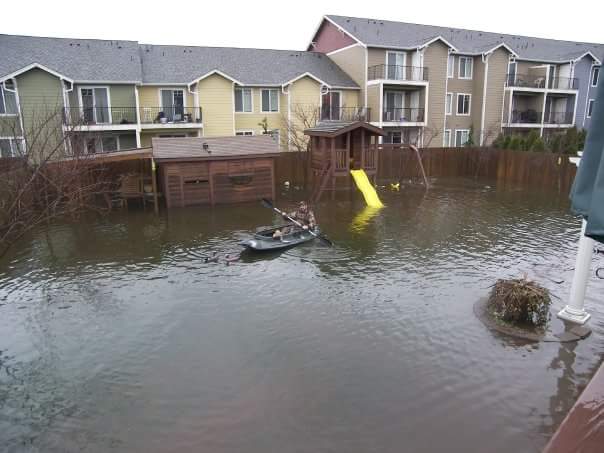
Do you need flood insurance?

Many Americans don’t need to wonder if they need flood insurance — it’s required as a condition of their home loan. But unlike car insurance, flood insurance isn’t required simply because you own property. In these cases, flood insurance raises the same question as other insurance policies do: When does the premium outweigh the actual risk? Even a $650 annual premium, the amount the National Flood Insurance Program (NFIP) cites as average, seems like a lot if you never use the coverage.
Flood damage isn’t covered under most homeowners’ policies, and some can responsibly do without benefits. Here’s what to do if you choose that route—and how to save if you want protection after all.
Can you do without it?
If flood insurance isn’t required as a condition of your mortgage, you’re not obligated to carry it. However, even a minimal amount of flooding can have disastrous financial consequences. According to the NFIP, one foot of water could cause $27,150 of damage to a 1,000-square-foot home, and the average claim is more than $38,000. You can use the program’s tool to generate a personalized estimate. Moderate-to-low-risk areas still receive one-third of federal disaster assistance for floods.
That said, if you live in a low-risk zone, you might want to weigh the cost of coverage against the likelihood of having to file a claim. If your area has never sustained serious damage, and you’re thinking of dropping your plan (or not getting one in the first place), you should still set aside money for repairs.
Consider having the amount you’d pay in premiums automatically deposited each month into a high-yield checking or money market account. This will get you better returns than simply saving your cash and with little risk. Some states, such as South Carolina, also allow customers to place their emergency funds in Catastrophe Savings Accounts that are exempt from state income tax. Federal taxes still apply, and disbursements would be taxed as normal if withdrawn for purposes other than flood repairs.
Unless you’re certain you could financially weather a major flood, do not take the decision about coverage lightly. Get estimates for potential damage and consult with a financial planner or representative from your bank to see if the costs are feasible.
Where to buy it
If you’ve decided the risk is too great and you’d like to purchase flood insurance, you have several alternatives. National or state-run programs, such as the NFIP, are the best bet for many homeowners. (A list of communities participating in the NFIP is available here.) If none are available in your area, however, some private insurers do offer flood insurance. In fact, their premiums may undercut the NFIP’s, so it’s smart to gather quotes before committing to a policy.
How to save
Once you’ve decided on a flood insurance carrier, there are ways to shave a bit off your premium. Some home improvements, such as raising the elevation of your house or installing flood vents, can lower your risk of flooding and also lower your monthly insurance payment. If you go this route, make sure the costs don’t eat into whatever you’ve set aside to meet your deductible. You can also choose to have a higher deductible or less coverage. Agreeing to pay more in the event of a claim will help you manage your premiums—just be sure you can afford to come through with the cash if needed.
The bottom line
Of course, no matter how well you plan for a flood, the costs may be more than you anticipate. If you aren’t already on solid financial footing, with some money set aside for emergencies, it may be better to get covered. Flood policies in moderate-to-low-risk areas could cost less than your monthly cell phone bill, and could save you a bundle if your home sustains damage.
For a quote on your flood insurance needs contact us today!
Source: USA Today
Categories: Blog
